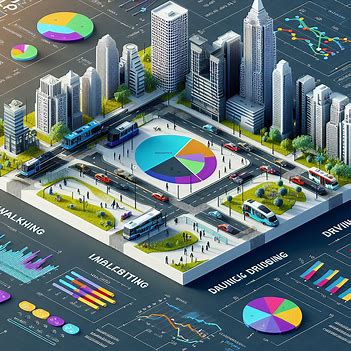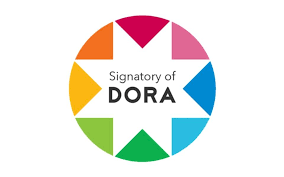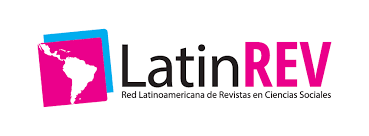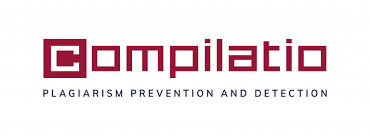Analysis of the evolution of the modal split in the Metropolitan Area of Mendoza, Argentina
DOI:
https://doi.org/10.56124/sapientiae.v7i13.0013Keywords:
urban mobility, modal split, sustainabilityAbstract
The world's population lives in urban conglomerations with common denominators: uncontrolled growth, sprawling cities, car dominance, social asymmetries, lack of accessibility, inadequate land use distribution, traffic congestion, pollution, intensive energy consumption, and declining quality of life. This shared crisis in 21st-century cities positions urban mobility as one of the key factors in achieving sustainable planning. The objective of the research is to analyze the Modal Split in the Mendoza Metropolitan Area considering data from four Origin-Destination Surveys to specify the predominant modes of travel and the model of city development to prioritize. The investigation confirmed the need to tend towards a compact and sustainable city, with more pedestrian and green spaces recovered from vehicular use. The importance of improving current regulations for sustainable planning that integrates mobility was also highlighted.
Downloads
References
Arboit, M. & Maglione, D. (2022). Análisis del ancho de calles de las manzanas urbanas en el Área metropolitana de Mendoza, Argentina. MADGU. Mundo, Arquitectura, Diseño Gráfico Y Urbanismo, 5(10), 24. https://doi.org/10.36800/madgu.v6i10.77
Bibri, S. (2021). Data-driven smart sustainable cities of the future: new conceptions of and approaches to the spatial scaling of urban form. Future Cities and Environment, 7 (1):4, 1–15. https://doi.org/10.5334/fce.120
Bruton, M. (1978). Introducción al planeamiento del Transporte. Buenos Aires, Troquel.
Cavoli, C. (2021). Accelerating sustainable mobility and land-use transitions in rapidly growing cities: Identifying common patterns and enabling factors. Journal of Transport Geography, 94. https://doi.org/10.1016/j.jtrangeo.2021.103093
Consejo Federal de Inversiones (CFI). (1987). Estudio de Transporte Público de Pasajeros, Gran Mendoza. Tomo II.
Dalla-Torre, J. (2020). Nuevo sistema de transporte público en el Área Metropolitana de Mendoza, Argentina. Algunas reflexiones sobre movilidad. Revista Transporte y Territorio, (22), 230-257. https://doi.org/10.34096/rtt.i22.8409
Dirección de Estadísticas e Investigaciones Económicas del Gobierno de la Provincia de Mendoza (DEIE). (2005). Estudio de Patrones de Movilidad.
Dirección de Vías y Medios de Transporte & Facultad de Ciencias Políticas y Sociales, Universidad Nacional de Cuyo. (1998). Encuesta del transporte urbano del Gran Mendoza, zona Este y Lavalle. Origen- Destino 1998.
Escudero, N. (2017). Movilidad urbana y ciudad sustentable. Las experiencias de los casos de Curitiba y de Nantes, desde la perspectiva de la sustentabilidad. Santiago de Chile, Fondo de Cultura Económica. https://repositorio.uchile.cl/handle/2250/145918
Fondo de población mundial. (14 de marzo de 2024). https://www.unfpa.org/es
García-Schilardi, M. (2021). Implicaciones de la distribución espacial del mercado de transporte colectivo en una ciudad intermedia argentina. Área Metropolitana de Mendoza. Territorios, (44), 1-28. https://doi.org/10.12804/revistas.urosario.edu.co/territorios/a.8278
González-García, S.; Camaño, M.; Moreira, M. & Feijoo, G. (2021). Environmental profile of the municipality of Madrid through the methodologies of Urban Metabolism and Life Cycle Analysis. Sustainable Cities and Society, 64. https://doi.org/10.1016/j.scs.2020.102546
Gutiérrez, A. (31 de marzo- 3 de abril de 2009). Movilidad o inmovilidad: ¿Qué es la movilidad? Aprendiendo a delimitar los deseos. Congreso Xv Clatpu, Buenos Aires, Argentina. https://ingenieria.uncuyo.edu.ar/catedras/movilidad-o-inmovilidad-que-es-la-movilidad-aprendiendo-a-delimitar-los-deseos.pdf
Ministerio de Obras y Servicios Públicos. (1972). Estudio Preliminar de Transporte de la Región Metropolitana. Buenos Aires, MOSP.
Pernice, D. (octubre 2023). La política común de transportes: Panorama general. https://www.europarl.europa.eu/factsheets/es/sheet/123/la-politica-comun-de-transportes-panorama-general
Pons, M. (1999). Estudio de demanda Gran Mendoza. Dirección de Vías y Medios de Transporte Ministerio de Obras Públicas y Medio Ambiente.
Provincia de Mendoza. (2005, 09 de agosto). Ley Provincial 7.412 de Administración, Planificación y Regulación del Transporte Público de Pasajeros. Boletín Oficial 27486. https://www.mendoza.gov.ar/wp-content/uploads/sites/19/2018/10/Ley-N%C2%BA-7412-Ente-de-Movilidad.pdf
Provincia de Mendoza. (2009, 05 de mayo). Ley Provincial 8.051 de Ordenamiento Territorial. Boletín Oficial 28407. https://www.mendoza.gov.ar/wp-content/uploads/sites/44/2017/01/Ley-8051.pdf
Provincia de Mendoza. (2017a, 28 de noviembre). Ley Provincial 9.024 de Normas para la seguridad vial. Boletín Oficial 30501. https://www.argentina.gob.ar/normativa/provincial/ley-9024-123456789-0abc-defg-420-9000mvorpyel/actualizacion
Provincia de Mendoza. (2017b, 23 de agosto). Ley Provincial 8.999 de Plan Provincial de Ordenamiento Territorial. Boletín Oficial 30437. https://www.argentina.gob.ar/sites/default/files/infoleg/klmnoprs-tuvw-leyp-rovm-0008999f1pdf%20name%3AM0008999F1.PDF.pdf
Provincia de Mendoza. (2018a, 06 de marzo). Ley Provincial 9.051 de Sistema de movilidad de pasajeros de la provincia de Mendoza. Boletín Oficial 30565. https://www.mendoza.gov.ar/wp-content/uploads/sites/19/2018/10/LEY-9051-Modificatoria-de-Ley-7412.pdf
Provincia de Mendoza. (2018b, 31 de julio). Ley Provincial 9.086 de movilidad provincial. Boletín Oficial 30662. https://www.mendoza.gov.ar/wp-content/uploads/sites/20/2024/02/Ley-de-Movilidad-No-9086.pdf
Proyecto de Transporte Urbano para Áreas Metropolitanas (PTUMA). (2012). Encuesta de Origen-Destino 2010: Movilidad en el Área Metropolitana de Mendoza. -1ª ed- Buenos Aires. https://www.argentina.gob.ar/transporte/dgppse/publicaciones/encuestas
Tena, A. (10 de marzo de 2024). Dos tercios de la población mundial vivirá en ciudades en 2050. Revista Contexto (158). https://ctxt.es/es/20180228/Firmas/18167/Ciudades-poblacion-mundial-concentracion-areas.htm
UN-Habitat. (2022). World Cities Report 2022: Envisaging the future of cities. United Nations Human Settlements Programme: Nairobi, Kenya. https://unhabitat.org/wcr/
United Nations (2019). Global Sustainable Development Report 2019: The Future is Now-Science for Achieving Sustainable Development. New York, United Nations. https://sdgs.un.org/sites/default/files/2020-07/24797GSDR_report_2019.pdf
Vasconcellos, E. (2019). Contribuciones a un gran impulso ambiental para América Latina y el Caribe: movilidad urbana sostenible. Documentos de Proyectos, (LC/TS.2019/2), Comisión Económica para América Latina y el Caribe (CEPAL). https://repositorio.cepal.org/server/api/core/bitstreams/f68e06e1-a627-4112-a64d-fc4f49be4d95/content

Published
How to Cite
Issue
Section
License
Copyright (c) 2024 Revista Científica Multidisciplinaria SAPIENTIAE. ISSN: 2600-6030.

This work is licensed under a Creative Commons Attribution-NonCommercial-ShareAlike 4.0 International License.

2.jpg)


















